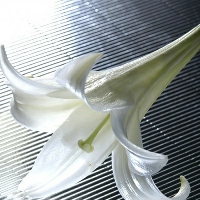The sketch is graded 10, which represents the students' painting strength and is also very helpful to the examinees' confidence. However, the sketch examination will not give extra points to the college entrance examination, so if the examinee is confident of his own strength, this kind of grade examination can also be ignored.
Ten levels of sketch represent level
The tenth level of sketch is the highest level. It is already a very powerful level and can be a professional teacher.
If you want to practice sketching and draw digital drawings by yourself, you should first understand the purpose of learning sketching in this case: learn how to observe the structure, light and shade of objects. It is not learning how to draw a pile of neat lines, how to sharpen a pencil, how to draw a neat circle or wine jar, because these problems do not exist in digital painting.
The sketch grade exam is divided into several grades
class a
90 minute Octopus single geometric figure sketch
Requirements: a piece of monochrome interlining shall be used to ensure centralized and stable light. The composition is appropriate, the shape is basically accurate, and there is a simple light dark relationship (black, white, gray)
second level
90 minute eight open sketch of two geometric shapes
Requirements: a piece of monochrome interlining shall be used to ensure centralized and stable light. The composition is appropriate, the scale and shape are basically accurate, and the structure is complete. There is a simple relationship between black, white and gray.
Level 3
120 min Octopus multiple geometric figure combination sketch (more than three)
Requirements: a piece of monochrome interlining shall be used to ensure centralized and stable light. The composition is appropriate, the proportion and structure are accurate, which can better represent the three-dimensional sense of geometric shape, and the light dark relationship is clear.
Amateur Intermediate
(Level; examination time, paper specification, content; requirements, assessment standards)
Level IV
120 minute four open pottery pot and two to three geometry combination writing
Requirements: a piece of monochrome interlining shall be used to ensure centralized and stable light. The composition is appropriate, the proportion and structure are accurate, and can completely show the light dark relationship and the difference of three-dimensional space and texture.
Level 5
150 minutes, four open pots, white plates and a fruit sketch
Requirements: a piece of monochrome interlining shall be used to ensure centralized and stable light. The composition is appropriate, the proportion and structure are accurate, and the relationship between black, white and gray is clear, which can better represent the stereoscopic sense and texture of still life.
Level 6
150 minute round facial sketch of a single plaster figure (mouth, eyes, nose, ears)
Requirements: a piece of monochrome interlining shall be used to ensure centralized and stable light. The composition is appropriate, the proportion and structure are accurate, which can accurately express the three-dimensional and texture of objects, and the description is deep.
Amateur/Professional Senior
(Level; examination time, paper specification, content; requirements, assessment standards)
Level 7
150 minute quarto gypsum round face sketch
Requirements: (Alexander, Beethoven, the Warrior, the God of War) complete composition, accurate facial features proportion, perspective, complete sketch relationship, in-depth description, texture and volume.
Grade VIII
180 minute four opening plaster head sketch
Requirements: Voltaire, Agriba, Seneca, Juliano Medici (Xiaowei) have complete composition, accurate form and structure, similar image, deep and detailed description, and clear black, white and gray relations with a sense of space and three-dimensional.
Level 9
180 minute four opening portrait of young and middle-aged men or plaster portrait sketch
Requirements: The structures of Marseilles, Homer, the tower head and the Roman king are complete, the body structure is accurate, the image is similar, the picture is unified and complete, and there are certain performance skills. The sketch relationship is clear, with a sense of space, texture and quantity.
Grade 10
Plaster figure or figure bust sketch
Requirements: complete picture composition; The modeling is accurate and specific, and can accurately show the basic characteristics and mental outlook of the image; The head, neck, shoulder, chest and other major structural relationships are strongly shaped, and the color levels are clear; Proficient in sketch expression techniques; The works have certain characteristics and appeal.

